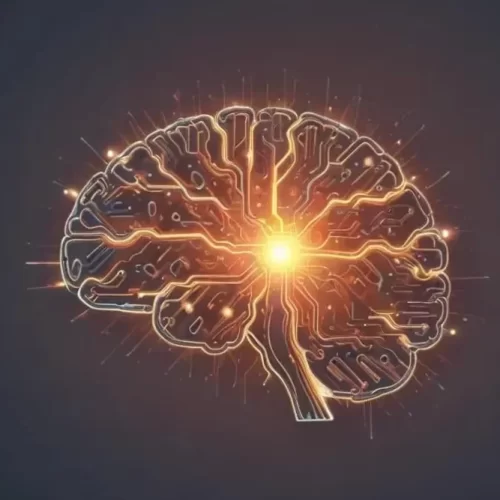
For people who struggle with post-traumatic stress disorder (PTSD), one of the hardest things to do is deal with the memories of what they have been through.
These memories might seem to come out of nowhere and can be triggered by certain smells, sounds, places, people, or other things. And sometimes, they can be so vivid that they make you forget where you are and feel like you are back in the time when they happened.
If you are experiencing these types of memories, the most important thing is to find healthy methods to deal with the trauma you’ve experienced. That is what we will be discussing in the article today.
But let’s first understand what PTSD is.
What is PTSD?
Post-traumatic stress disorder (PTSD) is a mental health condition that occurs when someone witnesses or experiences a traumatic event. It can be anything from injuries, deaths, assaults, natural disasters, or acts of violence. As per the WHO, about 3.9% of the global population suffers from PTSD.
When someone experiences PTSD, intense anxiety, flashbacks, nightmares, withdrawal from pleasure, and uncontrollable thoughts are very common. These symptoms can persist for a long time, which can lead to unhealthy coping mechanisms.
Research-Based Methods for Coping with PTSD
Living with PTSD can be overwhelming. But with the help of proven techniques, you may learn to manage your symptoms and lead a more normal, healthy life.
1. Educate Yourself
PTSD symptoms can feel overwhelming, even making you question your grip on reality. But you need to remind yourself that you are not going insane. It is just your brain’s way of dealing with the trauma.
The main thing is to learn what specific triggers make you anxious or remind you of painful emotions or experiences. Once you know these triggers, think about whether you can avoid those situations or places. But don’t take it as if you are running away from them. It is more like you are giving yourself the space and resources you need to heal.
2. Self-Soothing
As you may know, symptoms of PTSD can drag you back in time. Fortunately, there are many quick ways you can employ to soothe yourself and manage developing feelings. Try incorporating as many or all of the following as possible into your daily routine.
Grounding technique
Grounding is a great way to focus on the present and reduce flashbacks. You can perform it in many ways:
- Touch the different textures around you and describe their characteristics. For example, feel the touch of the fabric you are wearing and describe its material and color.
- Keep something like a keychain or handkerchief in your bag or pocket, and if you feel overwhelmed, get a hold of them.
- Listen to four distinct sounds around you and focus on their sources. Identify what makes them different from each other.
Remember to keep your eyes open while performing these grounding exercises. It will help you stay in the present and see your surroundings. Talking aloud about what you experience is also a smart move.
Breathing Exercises
Focusing on relaxing your breathing is a quick way to decrease the stress response. According to Harvard Medical School, deep breathing exercises increase the flow of oxygen to your lungs, stabilize blood pressure, and reduce the stress response that causes your body and mind unnecessary attention.
To practice deep breathing, start by taking a deep breath from your nose and holding it inside your lungs for 3 seconds. Then slowly blow the air out of your mouth. Perform this technique 10-15 times in a single go.
Progressive Muscle Relaxation
Since PTSD causes anxiety, it also tends to tighten your muscles. One thing you can do to calm yourself is to perform progressive muscle relaxation.
This method of relaxation has been well studied for PTSD, with positive results. To begin relaxation, start with the extremity muscles. Draw attention to your feet and toes, and tighten the muscles in this area on purpose. Hold it for a few seconds and then release the tension.
As you move up your body, follow the same pattern of tensing and relaxing different muscle groups of the legs, thighs, abdomen, arms, chest, and face. Pay close attention to each area and feel the muscles relax as you let go of the stress.
Aromatherapy
As per a study done in 2013, certain aromas may have a calming effect on your mood. It means your favorite aroma or perfume can be your best friend in soothing your PTSD symptoms.
Essential oils also have a great reputation for reducing symptoms of anxiety, panic attacks, hopelessness, fear, and tension, all of which can be felt in PTSD. Some essential oils you can use are lavender, orange, bergamot, jasmine, and chamomile. So experiment with different oils and find out which one calms you the most.
Try diffusing them in the air or applying them to your pulse points, such as your wrists, temples, and behind the ears.
3. Reclaim Your Sense of Power
Traumas are no doubt the worst thing to experience. They can make you feel vulnerable and helpless in any situation. But you can overcome this feeling by constantly reminding yourself about your inner strengths.
The easiest way to do this is by distracting yourself with some helpful activities, such as giving blood, doing something you like, or donating to charity. One study suggested that playing games like Tetris can reduce flashbacks associated with PTSD. Even word games have proven beneficial.
So by performing these small activities, you can give yourself a purpose with a sense of positivity that challenges your feeling of helplessness.
4. Journaling Can Help
Writing is great. It enhances mental and emotional health by allowing one to freely express oneself. Especially writing about your emotions, which is called expressive writing, is helpful if you have been through emotional trauma. Even research has found that journaling can reduce flashbacks, nightmares, and unwanted recollections in people with PTSD.
So start writing your thoughts down in a diary or piece of paper. Don’t worry about grammar, spelling, or punctuation. Just say whatever you need to say. You will start feeling a bit of relief in no time.
5. Mindfulness
PTSD can cause strong flashbacks, in which the mind and body feel like they are experiencing the same traumatic event. But by practicing mindfulness, you can prevent your thoughts from racing to the past or the future.
It has been found that people who perform mindfulness practices have reduced PTSD symptoms compared to those who don’t. To help you be in the here and now, there are a variety of mindfulness techniques you may use. Some examples include yoga and meditation.
You can do it by finding a peaceful place and then gently focusing your attention on your breathing. Feel the sense of calm and how the air moves around your nostrils and abdomen. The goal is to be mindful of the small activities that occur around you.
Start by performing one or two minutes of mindfulness practice, and as you go, slowly add more time. Give yourself breaks to feel calm and learn how to keep your balance if you start to feel nervous or stressed.
6. Keep a Pet
As surprising as it sounds, interaction with animals reduces anxiety and loneliness.
This is also true in the case of PTSD, as there is evidence that adopting a trained animal helps patients manage symptoms such as depression and anxiety. In another study, many people who have PTSD reported 82% relief in their PTSD symptoms just after spending one week with a pet.
So why not try it? Take your pet for a walk outside. It will surely help to reduce the anxiety and sadness you might be feeling.
7. Get Active
No one can deny the importance of physical activity for the body. But it works no less for mental health too. There are many studies that link physical activity with a reduction in stress, anxiety, and depression. Engaging in mindful physical exercise may also stimulate your neurological system, allowing you to overcome that “stuck” feeling and move on.
There is no hard-and-fast rule and you can perform any physical activity you like. Be it swimming, going to the gym, doing aerobic exercises, or just taking a simple stroll, all are equally effective.
Try to perform physical activity for 30 minutes every day. But if you feel like this is too much for you, try working out for 10 to 15 minutes first.
8. Avoid Drugs and Alcohol
You might be tempted to use alcohol or drugs to cope with your PTSD. But remember, these substances can only provide temporary relief. In fact, clinging to these can also halt therapy and recovery and increase the risk of addiction and misuse.
So the best strategy is to avoid them at all costs, no matter how much you wish to use them.
9. Seek Support from Others
PTSD can make you feel disconnected from others. You may want to isolate yourself from family and friends and bind yourself in a negative cycle of thoughts.
But remember that there are people who care about you, and you can seek support from them. In fact, a study shows that social support can significantly decrease the severity of PTSD symptoms.
So, whenever you feel down or remember past traumas, try to be open and talk to your trusted loved ones. Share your thoughts and feelings with them and allow them to support you in this difficult time. Even if you don’t feel like talking, just staying together in the same room can also work. The support of our friends or loved ones will carry you a long way in recovery.
If you feel hesitant or have no one to share your feelings with, you can connect with others who have experienced similar things via support groups in your area or online. You will be surprised at how much you feel better after talking to others!
10. Getting Professional Treatment for PTSD
Sometimes, the trauma can be so tragic that it can’t get better by any means. You may find that you cannot interact with other people or face your fears.
In such cases, you may need help from a mental health professional, especially one who specializes in trauma. Working with a professional will also allow you to talk about any guilt, shame, or self-blame you may have because of the stressful event. They can also perform a variety of evidence-based approaches, such as cognitive-behavioural therapy (CBT), to help with symptoms.
There are several ways to find a mental health professional who can help you with PTSD. Talk to your family doctor or people you know who also have PTSD.
PTSD can sometimes also lead to negative thinking patterns. For some proven techniques to manage these cognitive distortions, check out the article on overcoming cognitive distortions.
Summing it Up
In PTSD, trauma and feelings of anxiety can go hand in hand. But don’t lose hope; give a shot at the above-mentioned methods and see what works best for you. Also remember that just as it may take a long time to clean up the mess and fix the damage, it may take time to get your emotional bearings; start again after a tragedy.
Let us know your thoughts about these ways to cope with PTSD. Which one would you try for yourself or suggest to others?
References
- Post-traumatic stress disorder. 27 May 2024, www.who.int/news-room/fact-sheets/detail/post-traumatic-stress-disorder#:~:text=Key%20facts,events%20do%20not%20develop%20PTSD.
- “Relaxation techniques: Breath control helps quell errant stress response.” Harvard Health, 24 July 2024, www.health.harvard.edu/mind-and-mood/relaxation-techniques-breath-control-helps-quell-errant-stress-response.
- Blanaru, Monica, et al. “The effects of music relaxation and muscle relaxation techniques on sleep quality and emotional measures among individuals with posttraumatic stress disorder.” Mental Illness, vol. 4, no. 2, July 2012, pp. 59–65. https://doi.org/10.4081/mi.2012.e13.
- Krusemark, Elizabeth A., et al. “When the Sense of Smell Meets Emotion: Anxiety-State-Dependent Olfactory Processing and Neural Circuitry Adaptation.” Journal of Neuroscience, vol. 33, no. 39, Sept. 2013, pp. 15324–32. https://doi.org/10.1523/jneurosci.1835-13.2013.
- Fung, Timothy K. H., et al. “Therapeutic Effect and Mechanisms of Essential Oils in Mood Disorders: Interaction between the Nervous and Respiratory Systems.” International Journal of Molecular Sciences, vol. 22, no. 9, May 2021, p. 4844. https://doi.org/10.3390/ijms22094844.
- Kessler, Henrik, et al. “Reducing intrusive memories of trauma using a visuospatial interference intervention with inpatients with posttraumatic stress disorder (PTSD).” Journal of Consulting and Clinical Psychology, vol. 86, no. 12, Dec. 2018, pp. 1076–90. https://doi.org/10.1037/ccp0000340.
- Hagenaars, Muriel A., et al. “Tetris and Word games lead to fewer intrusive memories when applied several days after analogue trauma.” European Journal of Psychotraumatology, vol. 8, no. sup1, Oct. 2017, https://doi.org/10.1080/20008198.2017.1386959.
- APA PsycNet. psycnet.apa.org/record/2002-17814-010.
- Hopwood, Tanya L., and Nicola S. Schutte. “A meta-analytic investigation of the impact of mindfulness-based interventions on post traumatic stress.” Clinical Psychology Review, vol. 57, Nov. 2017, pp. 12–20. https://doi.org/10.1016/j.cpr.2017.08.002.
- O’Haire, Marguerite E., et al. “Animal-Assisted Intervention for trauma: a systematic literature review.” Frontiers in Psychology, vol. 6, Aug. 2015, https://doi.org/10.3389/fpsyg.2015.01121.
- Carek, Peter J., et al. “Exercise for the Treatment of Depression and Anxiety.” The International Journal of Psychiatry in Medicine, vol. 41, no. 1, Jan. 2011, pp. 15–28. https://doi.org/10.2190/pm.41.1.c.
- Hegberg, Nicole J., et al. “Exercise Intervention in PTSD: A Narrative Review and Rationale for Implementation.” Frontiers in Psychiatry, vol. 10, Mar. 2019, https://doi.org/10.3389/fpsyt.2019.00133.
- Tipps, Megan E., et al. “Substance abuse, memory, and post-traumatic stress disorder.” Neurobiology of Learning and Memory, vol. 112, July 2014, pp. 87–100. https://doi.org/10.1016/j.nlm.2013.12.002.
- Gros, Daniel F., et al. “Relations among social support, PTSD symptoms, and substance use in veterans.” Psychology of Addictive Behaviors, vol. 30, no. 7, Nov. 2016, pp. 764–70. https://doi.org/10.1037/adb0000205.
- —. “Cognitive behavior therapy for adult post-traumatic stress disorder in routine clinical care: A systematic review and meta-analysis.” Behaviour Research and Therapy, vol. 166, July 2023, p. 104323. https://doi.org/10.1016/j.brat.2023.104323.



Leave a Reply